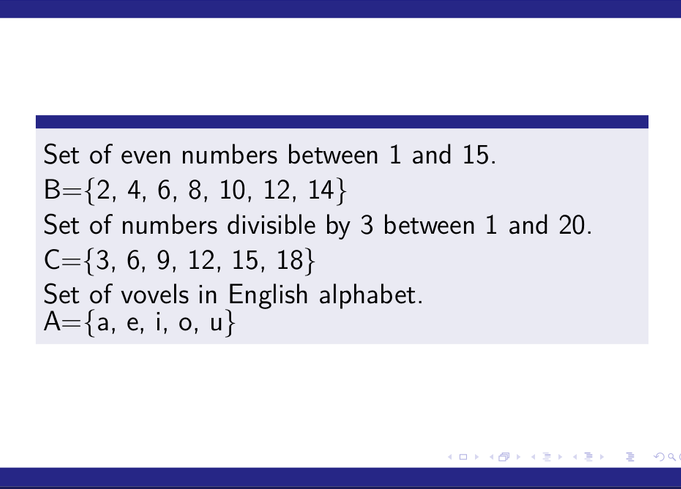Set is a fundamental concept in mathematics and each object of interest in mathematics is set of some type.
Set theory was developed by German mathematician George Cantor, who defined set as collection of well-defined objects.
Here well-defined means.
One can say or decide that an element belongs to a given collection or not.
If a is an element and belongs to collection A then it is written as a epsilon A.
Moreover, if a does not belong to collection A it is written as a (cut epsilon).
Usually, capital letters A, B, C, D…… are used to represent a set. Furthermore, small letters a, b, c, d, e, …………. are used to represent elements of a set.
Basically, there are two ways to represent a set.
(1)- Roster or Tabular form
(2)- Rule Method or Set Builder form
In Roster or Tabular form the listed elements are separated by comma and are enclosed in curly braces.
Examples of sets in Tabular form or Roster form are,
1- Set of vowels in English alphabet
A={a, e, i, o, u}
2- Set of even numbers between 1 and 15.
B={2, 4, 6, 8, 10, 12, 14}
3- Set of numbers divisible by 3 between 1 and 20.
C={3, 6, 9, 12, 15, 18}
The order of elements does not matter in a set.
i.e.
i.e. {o, i, e, a, u} = { a, e , i, o, u}
are equal
In rule method or set builder form a set is defined by specifying a property which is common in all elements.
Example,
A={x: x is a vowel in English alphabet}
Instead of colon (:) a vertical bar can also be used.
i.e
A={x| x is a vowel in English alphabet}
B={x : x is even number between 1 and 15}
Types of set
1- Finite Set- A set having finite number of elements is called finite set.
Example-
D={2, 4, 6, 8, 10}
D has five elements
2- Null Set- A set which has not any element at all is called null set and it is denoted by fi.
3- Singleton Set- A set having only one element is called singleton set.
Example-
E={1}
